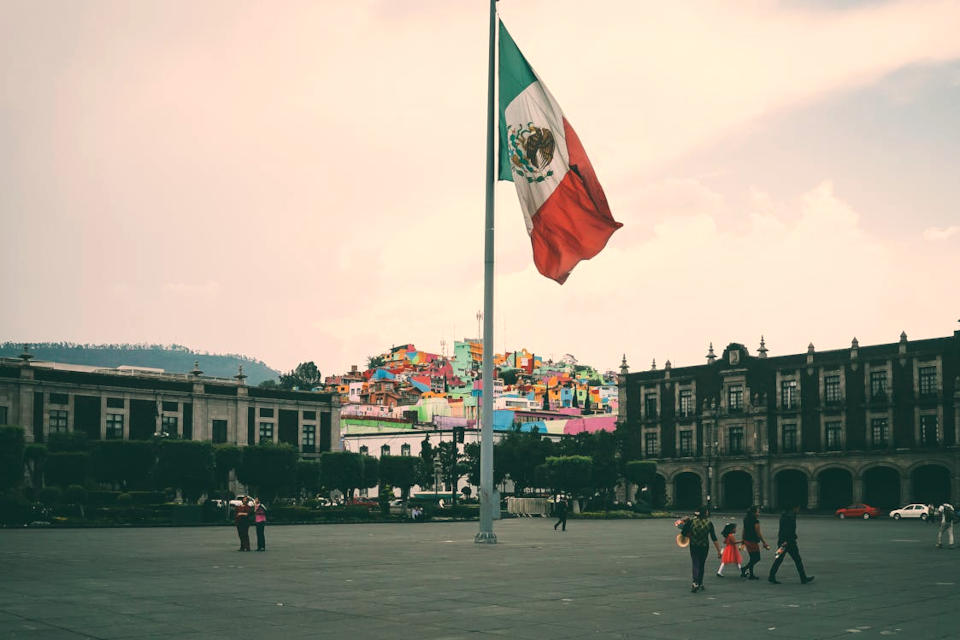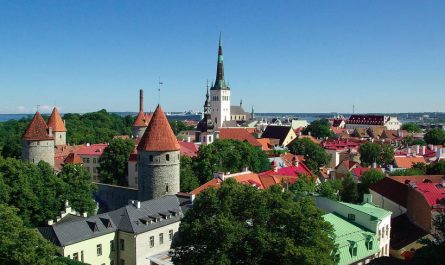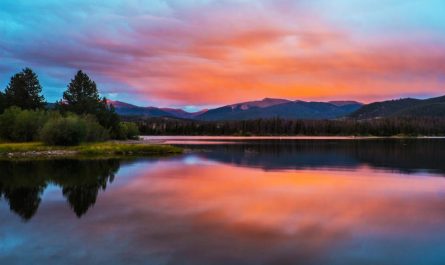With its rich culture, diversity, famous foods, awe-inspiring historical sites and more, Mexico is a popular destination for globe trotters and beloved home to millions of citizens. Dating all the way back to ancient times, Mexico has been a hotbed of culture and creation for millennia. While you may know a little about the food or cultural celebrations, we’ve compiled a list of cool facts about Mexico to help you appreciate this fascinating country even more.
8 Mesmerizing Mexico Facts
1. The country recognizes 68 national languages. (source)
As of 2020, more than 90% of the the Mexican population speaks primarily Spanish. However, despite this, Mexico technically doesn’t have an official language. Instead, the Mexican government recognizes 68 official national languages, 63 of which are indigenous. In the centuries since the beginning of the colonial era in South America, many of the original native languages were lost, but modern efforts are being made to preserve those that are still spoken around the country.
2. A Mexican inventor created the first color television. (source)
Guillermo González Carmena, born in 1917, was the first person to develop a color television. As a boy he enjoyed building electric gadgets, which informed his path later in life. In 1940, he patented the first chromoscopic adapter for cameras, which allowed television equipment to capture color. This technology was still being used by NASA as late as the 1970s to transmit images from Jupiter.
3. It has the most Spanish speakers in the world. (source)
With a whopping 120 million Spanish speakers, Mexico wins first place by a considerable margin.
At less than half the number, second place goes to Colombia with around 45 million speakers, followed by Argentina in third and the United States in fourth. Of these four countries, the United States is the only one whose population doesn’t primarily speak Spanish.
4. The comet that killed the dinosaurs landed in Mexico. (source)
Throughout the 20th century, it was a popular theory that the dinosaurs were driven to extinction by a massive comet or asteroid impact. However, it wasn’t until Canadian scientist Alan Hildebrand investigated the Chicxulub crater in Mexico that scientists had a potential landing site.
Located in the Gulf of Mexico, the crater’s size, age and magnetic field readings have made researchers believe this could very well be the location of the meteor crash that led to the demise of the dinosaurs.
5. It boasts 10-12% of the world’s biodiversity. (source)
With so many different climates and biomes, Mexico is home to 564 species of mammals, 864 reptiles, and over 5,000 species of flora. 3,000 of those plants even have medicinal use in traditional Mexican culture.
A considerable portion of these species are endemic, meaning they only exist in one geographical area naturally. Sadly, many of these creatures are at risk due to environmental degradation over the years.
6. It was home to many of the greatest Pre-Columbian civilizations in the Americas. (source)
While most of North America was inhabited by smaller communities or nomadic peoples prior to the 16th century, Mexico has a rich history of large civilizations. The first of these great societies was the Olmecs, who lived between 1200 and 200 BC.
The Olmec’s religion, astrological studies, and stone technology were pillars of their successors, the Maya, who occupied a large area including Mexico, Guatemala, Belize, Honduras, and El Salvador.
The final great civilization was the Aztecs, who were a warlike people. They dominated the Valley of Mexico from the 13th century AD to the early 1500s.
7. The Olemcs were the first to produce chocolate. (source)
Possibly one of the most fun facts about Mexico is that it is the birthplace of chocolate. While modern chocolate brings to mind a sweet melty confection often gifted during Valentine’s day, back during the first few centuries of its cultivation, chocolate was actually consumed as a beverage.
Chocolate is derived from the cacao tree, which produces the beans that eventually become chocolate. Early Olmec people fermented these beans to create a sour stimulating drink quite different from modern chocolate. Over time, methods of processing chocolate evolved to create the sweet treat we love today.
Though it wouldn’t be recognizable to us, evidence indicates the older civilizations loved chocolate as much as we do now, with Aztecs even using the beans as a form of currency!
8. It is home to the oldest university in North and Central America. (source)
While many credit Harvard as being the oldest university in the US, the credit for oldest university in North and Central America goes to the National Autonomous University of Mexico. Located in Mexico City, this government-financed institution of higher education was actually founded in 1551 by Antonio de Mendoza, the first viceroy of New Spain. Over the centuries of political turmoil, the university changed names and closed many times, until the 1920s when the government took control of all higher education facilities.
Today, the university boasts a wide range of schools and vocations, including music, nursing, social work, dentistry, economics, medicine, philosophy, chemistry, business, accounting, and architecture.
With such a long history, there’s so much more to discover about Mexico and her people. What are your favorite Mexico facts? Have any that we missed? Let us know in the comments below!
Related:




